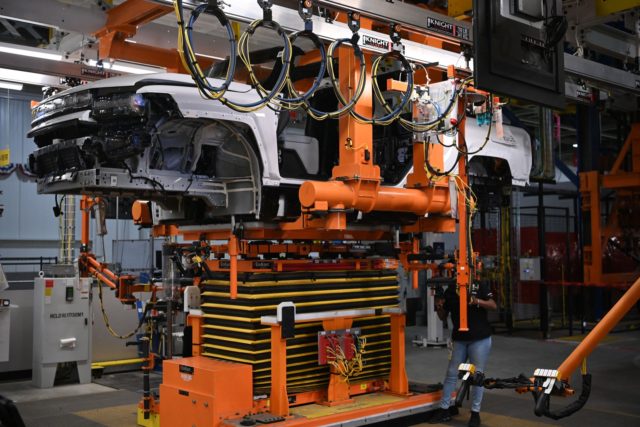U.S. factory output increased in November at a slower pace than the previous month, indicating supply chain bottlenecks continue to drag on production and may push inflation higher.
Factory production increased 0.7 percent compared with the prior month, the Federal Reserve said Thursday. This was roughly in line with the forecasts of Wall Street analysts.
In October, factory production grew by 1.4 percent, the Fed said. That was an upward revision from the 1.2 percent in the preliminary report released last month.
Capacity utilization in the manufacturing sector rose to 77.3 percent from an upwardly revised 76.8 percent in October. That’s the highest level since October 2018. The peak in capacity utilization over the last decade was 78.4 percent in April 2018. The 10-year average is 75.6.
Capacity utilization has been depressed in the U.S. compared with historical levels for the entirety of the 21st century. Utilization collapsed dramatically from over 80 percent in April 2000 to 71.1 percent December 2001. It climbed back up in the next few years reaching 78.5 percent in 2005, only to collapse again in 2008 to 63.4 percent.

The Obama era recovery saw a rapid climb that plateaued at just over 75 percent. Donald Trump presided over a re-energizing of the manufacturing sector in the first half of his term that was stymied by Federal Reserve rate hikes, now largely considered a policy mistake, and then devastated by the pandemic.
The relatively high level of capacity utilization now indicates that there may be more inflation ahead if demand for U.S. goods remains strong. More fiscal stimulus from legislation like the Biden Administration’s Build Back bill would likely contribute even more to inflationary pressures.
Motor vehicles and parts output rose 2.2 percent after a 10.1 percent jump in the prior month. Given the high demand for cars and trucks that has pushed prices of both new and used cars up at double-digit year-over-year rates, the slowdown in production growth is a sign that supply chain problems continue to be a problem. Production of autos is down 5.4 percent from a year ago.
Overall industrial production–which includes manufacturing, mining, and utilities–rose 0.5 percent, slightly less than the 0.7 percent expected. Utilities output fell 0.8 percent in November as much of the country experienced mild temperatures.
Mining output–which includes oil and natural gas–climbed just 0.7 percent after a 4.3 percent gain in the prior month. Oil production may have slowed in reaction to the Biden administration’s announcement that it would release supply from the Strategic Petroleum Reserves in hopes of bringing down the price of gasoline.

COMMENTS
Please let us know if you're having issues with commenting.